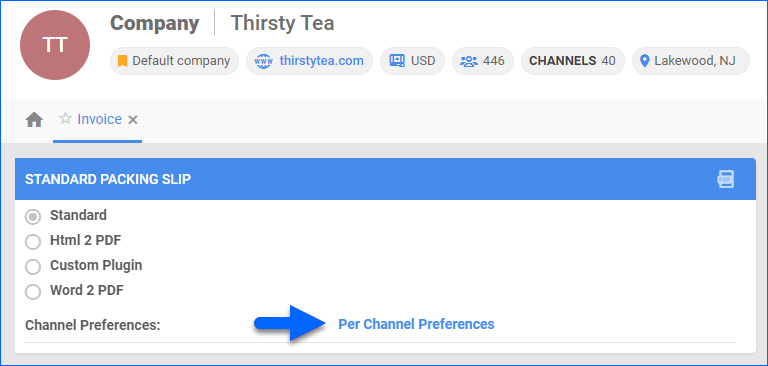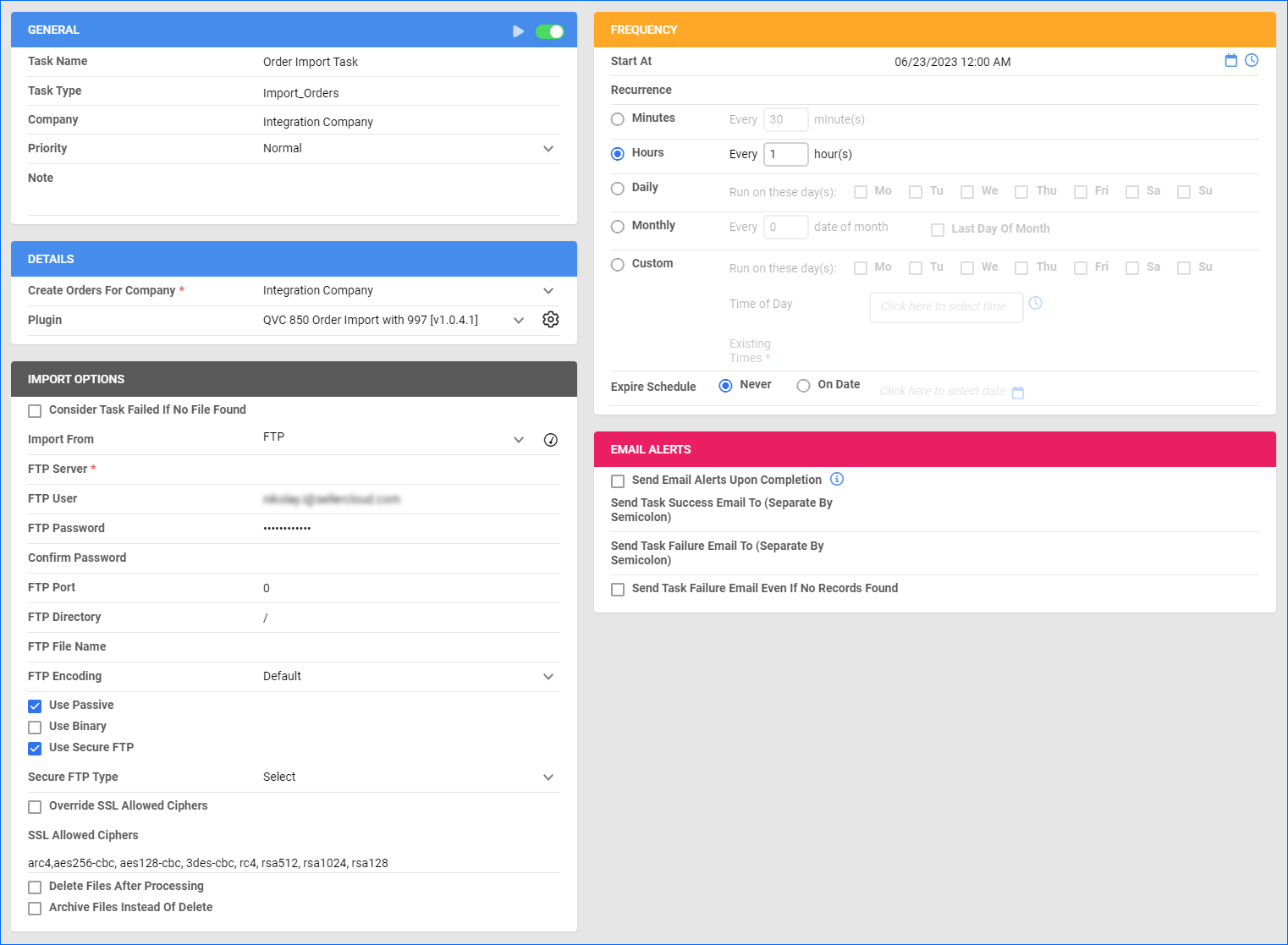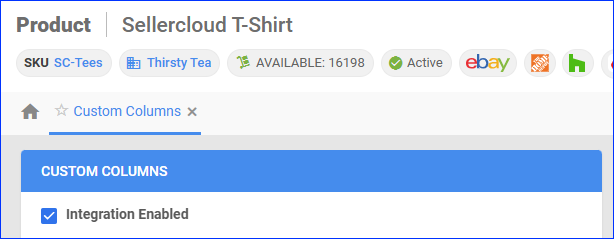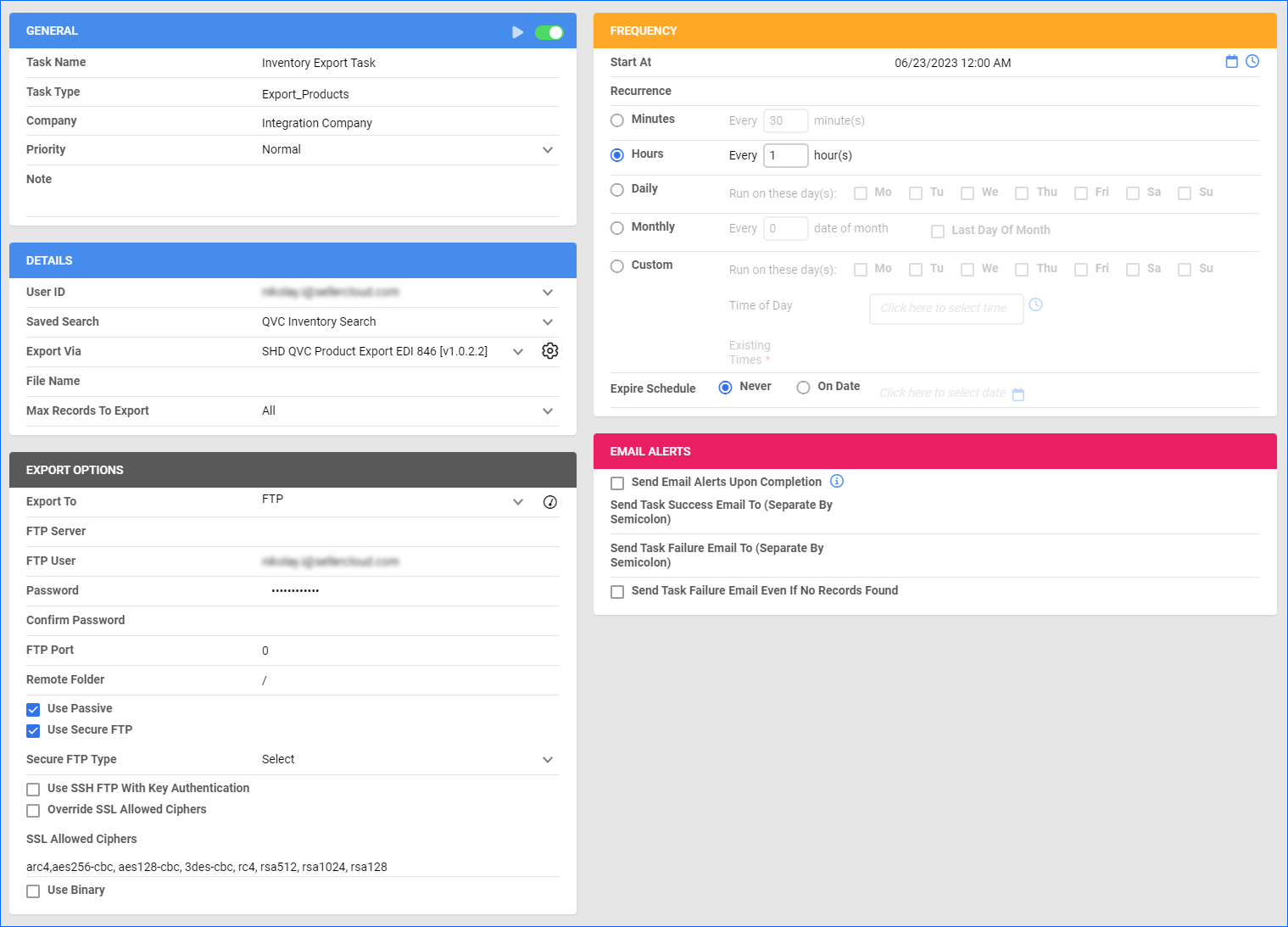Overview
QVC, which stands for “Quality, Value, and Convenience,” is a well-known American TV network and online retailer. Its online shop offers a variety of product categories, including fashion, electronics, home and kitchen items, health and fitness products, and much more. What sets QVC apart is its live and on-demand video presentations, which provide an interactive shopping experience with product demonstrations and expert advice.
Integrating QVC allows you to seamlessly import orders, upload tracking information, create invoices, and ensure your listings are always up-to-date with the latest inventory data. This integration works through EDI documents, transmitting information between the two services via plugins and Scheduled Tasks. The document exchange goes through Rithum, previously known as CommerceHub.
If necessary, you can open a ticket with Sellercloud Support to request additional customizations or other plugins for this integration. Any such modifications will be billable.
Prerequisites
Before you can integrate QVC into Sellercloud, you must have the following accounts:
- QVC Vendor Account – Contact QVC to become an approved vendor. You may need to submit a product proposal.
- Rithum Account – You must have a Rithum account. You will be assigned a Partner Setup Specialist working with Sellercloud Support to integrate your account.
Next, complete the following requirements.
Rithum Support
Before going live, you must follow a testing plan provided by Rithum, which involves sending a test transaction for each test order in the plan. Rithum provides two main documents—a Supplier Test Plan and a Supplier Guide. You must complete the entire test plan by following the outlined procedures.
Rithum will supply you with both the test and production credentials. Once you complete all test cases outlined in the test plan document, the platform will provide you with the production credentials and SFTP details. You must enter them into Sellercloud to set up the integration.
Sellercloud Support
Open a ticket with Sellercloud Support and request that the QVC plugins be installed on your server:
- QVC 850 Order Import with 997 – Imports orders from QVC to Sellercloud in EDI 850 format.
- QVC Tracking Export EDI 856 – Exports tracking information to QVC in EDI 856 format.
- QVC Product Export 846 EDI – Exports inventory to QVC in EDI 846 format.
- QVC General PDF Invoice – Generates a printable PDF packing slip in a format that complies with QVC’s requirements.
Custom Company Settings
Create the following Custom Company Settings.
On your default company:
- ISAControlNumber
- GSControlNumber
- STControlNumber
On the company created for the integration:
- QVC_ISAID – CommerceHub’s unique identifier for EDI document transmission. Contact them for the value of this setting.
- QVC_Vendor_ISAID – Enter a unique phone number you don’t currently use for another integration.
- QVC_IDReceiverQualifier – Set to 12.
- QVC_IDInterchangeQualifier – Set to ZZ.
- QVC_RetailerName – Added to replace the hard-coded REF02.
- QVC_WarehouseCodeMapping – Map Sellercloud warehouses to QVC Facility IDs and set Safety Quantities following this format: {WarehouseID1}/{WarehouseID2},{QVCWarehouseCode},{SafetyQty}. For example:
- Sellercloud Warehouse ID = 345, QVC Facility ID = California, Safety Quantity = 0
- Sellercloud Warehouse ID = 123, QVC Facility ID = California, Safety Quantity = 0
- Sellercloud Warehouse ID = 234, QVC Facility ID = Florida, Safety Quantity = 3
- Setting value: 123/345,California,0;234,Florida,3
- ExportMultipleWarehousesOnQVC846 – Set to True to Export Inventory per warehouse. This setting is required to send accurate inventory levels to QVC.
- (Optional) QVC_ShippingRequiresThirdPartyBilling – Enter True to require Third-Party Billing for QVC orders.
- (Optional) QVC_SkipImportingPayment – Defaults to False. If you set it to True, the Order Import plugin will not import any payments.
- (Optional) QVC_LockShippingMethod – Defaults to False. If you set it to True, the Order Import plugin will lock the shipping method.
- (Optional) QVC_DontPrintReturnPage – Defaults to False. If you set it to True, the PDF Invoice plugin will exclude the return page.
Custom Product Columns
Create the following Custom Product Columns:
- QVC_SKU – Corresponds to the QVC Merchant SKU. If this field is blank, the Inventory Export plugin will send the Sellercloud SKU.
- QVC_MERCHANT_SKU – Corresponds to the QVC Vendor SKU/Item Number. If this field is blank, the Inventory Export plugin will send the Sellercloud SKU.
- EXPECTED_AVAILABLE_DATE – The date when the product is expected to become available. It will be sent on backorder. If you don’t create this column or leave it blank, the default value sent to QVC will equal 1 month after the export.
- (Optional) QVCENABLED – Enable only specific products for QVC. Set to True for any products you want to send with the Inventory Export plugin.
Custom Order Columns
Create the following Custom Order Columns:
- QVC_VENDORNUMBER – Set the Data Type to String.
- Qvc_LabelTrackingNumber – Set the Data Type to String.
- Qvc_DeliveryReference – Set the Data Type to String.
- Qvc_ReturnToPartnerSortCode – Set the Data Type to String.
- Qvc_ShippingLabelFee – Set the Data Type to Decimal.
- QVC_PaymentMethod – Set the Data Type to String.
- QVC_MemberNumber – Set the Data Type to String.
- QVC_CreditAmount – Set the Data Type to Decimal.
- QVC_ShipFromAddress – Set the Data Type to nText.
- QVC_FirstProductInfo_PackingSlip – Set the Data Type to String.
Order Import
The QVC 850 Order Import with 997 plugin imports order data from QVC to Sellercloud in EDI 850 format and then sends an acknowledgment to QVC in EDI 997 format.
Automate Order Import
To create a Scheduled Task that imports orders:
- Navigate to Settings > Scheduled Tasks > Manage Scheduled Tasks.
- Click the green + icon: Create New Scheduled Task.
- Complete as follows:
- Click Task Type and select Import Orders.
- Set the Task Name.
- Select the Company.
- Select the Start Time.
- Click CREATE.
- On the Scheduled Task page, click the Edit button at the top right corner.
- In the Details panel:
- Click Create Orders For Company and select the company designated for this integration.
- Click the Plugin menu and select QVC 850 Order Import with 997.
- In the Import Options section, set Import From to FTP and fill out the FTP fields with the details provided by Rithum. Make sure to check Use Passive and Use Secure FTP.
- In the Frequency section, specify the task frequency. For optimal performance, select a range between thirty minutes and one hour.
- In the General section, click the Enable button.
- Click Save.
Tracking Export
The QVC Tracking Export EDI 856 plugin exports tracking from Sellercloud to QVC following the 856 EDI format.
This plugin supports separate tracking numbers for Split Orders. Additionally, if you split an order due to a partial cancellation, it automatically skips any child orders with statuses Cancelled and Void.
Before you move on, create a Saved Search for orders filtered by:
- Company – The company you created for the integration
- Order Status – InProcess Or Completed
- Shipping Status – FullyShipped
- Payment Status – Charged
- Tracking Uploaded – No
Automate Tracking Export
To create a Scheduled Task that exports order tracking:
- Navigate to Settings > Scheduled Tasks > Manage Scheduled Tasks.
- Click the green + icon: Create New Scheduled Task.
- Complete as follows:
- Click Task Type and select Export Orders.
- Set the Task Name.
- Select the Company.
- Select the Start Time.
- Click CREATE.
- On the Scheduled Task page, click the Edit button at the top right corner.
- In the Details panel:
- Click the User ID menu and select your email.
- Click the Saved Search menu and select the saved search you created earlier.
- Click the Export Via menu and select QVC Tracking Export EDI 856.
- Check This Is Tracking Export.
- In the Export Options section, set Export To to FTP and fill out the FTP fields with the details provided by Rithum. Make sure to check Use Passive and Use Secure FTP.
- In the Frequency section, specify the task frequency. For optimal performance, select a range between thirty minutes and one hour.
- In the General section, click the Enable toggle button.
- Click Save.
Inventory Export
The QVC Product Export 846 EDI plugin exports inventory from Sellercloud to QVC in EDI 846 format.
We send inventory per warehouse. The setting ExportMultipleWarehousesOnQVC846 must be set to True, and you must enter a mapping into the QVC_WarehouseCodeMapping Custom Company Setting.
If you mark a product as Discontinued on the Product Details Page, the plugin will send the date of discontinuation to QVC along with the next available date from the Custom Product Column EXPECTED_AVAILABLE_DATE.
Optionally, you can enable only specific products for QVC by setting their QVC_Enabled Custom Product Column to True:
- For one product at a time: go to the Product Details Page > click Toolbox and select Custom Columns > click Edit, update the QVC_Enabled column, and Save.
- For multiple products in bulk: follow the steps to Bulk Update Products and use the QVC_Enabled column – set it to True for all products you want to enable.
Unlike core integrations, plugin integrations don’t require products to be in the company with the scheduled tasks. The export will include the products you select with your Saved Search.
Next, create a Saved Search for products filtered by QVC_Enabled – True. Optionally, you can add more filters to the search to narrow down the export further.
Automate Inventory Export
To create a Scheduled Task that exports inventory:
- Navigate to Settings > Scheduled Tasks > Manage Scheduled Tasks.
- Click the green + icon: Create New Scheduled Task.
- Complete as follows:
- Click Task Type and select Export Products.
- Set the Task Name.
- Select the Company.
- Select the Start Time.
- Click CREATE.
- On the Scheduled Task page, click the Edit button at the top right corner.
- In the Details panel:
- Click the User ID menu and select your email.
- Click the Saved Search menu and select the saved search you created earlier.
- Click the Export Via menu and select QVC Product Export 846 EDI.
- In the Export Options section, set Export To to FTP and fill out the FTP fields with the details provided by Rithum. Make sure to check Use Passive and Use Secure FTP.
- In the Frequency section, specify the task frequency. For optimal performance, select a range between thirty minutes and one hour.
- In the General section, click the Enable toggle button.
- Click Save.
Configure PDF Invoices
With the QVC General PDF Invoice plugin set up under your designated company, you can print PDF invoices with information about your QVC orders and the products they include through Sellercloud or Shipbridge.
To set up the invoice plugin:
- Go to the Company Settings of the company you created for the integration
- Click Toolbox and select Invoice Settings.
- Click Per Channel Preferences.

- For Website, select Plugin > QVC General PDF Invoice.
- Click Save.




